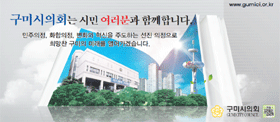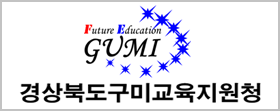구미시립무용단 창작 작품의 저작권 논란에 대한 노동조합의 입장 The labor union's position on the c…

지적재산권 분쟁을 막기위해서는 전문가의 멘토와 전문적인 학습이 필요하다.
경북서부지식재산센터, IP(지식재산) 경영 실무위원회 개최 현장(본 기사와는 관련 없음)
Expert mentors and professional learning are needed to prevent intellectual property disputes.
Gyeongbuk Western Intellectual Property Center, IP (Intellectual Property) Management Working Committee (not related to this article)
지난 2020.8.21. 대구지방법원 김천지원(이하 '법원')은 구미시립미용단 안무자 김우석 등이 현대 HCN새로넷방송 등을 상대로 제기한 정정보도 청구, 보도된 기사의 삭제 청구, 손해배상 청구 등에 대해 정정보도 청구만을 인용하고 나머지 청구를 모두 기각 하면서, 소송 비용의 대부분을 김우석 등의 원고가 부담하도록 하는 판결을 하였습니다.
법원은 문제가 된 대상 작품인 '망향'과 '엇디하릿고'가 안무, 음악, 의상, 조명 등이 결합되어 이루어진 결합저작물에 해당하고 이 가운데 안무 부분은 원고의 안무자의 저작권이 인정된다고 하면서도 저적권에 대해 의문을 제기한 새로넷방송의 보도가 비록 사실과 다소 차이가 있더라도 진실이라고 믿을 만한 상당한 이유가 있고, 보도의 주요 목적이 공공의 이익을 위한 것이며, 언론의 자유를 보장할 필요가 있다는 이유를 들어 정정보도 청구를 제외한 나머지 청구를 모두 기각한 것입니다.
법원은 '망향'과 '엇디하릿고'의 저작권이 안무자인 김우석에게 있다고 판단하면서 그 이유를 구미시가 저작권법 제9조에 따라 적절한 조치를 취하지 않았기 때문이라고 부연하고 있습니다.
법원이 지적한 저작권법 제9조는 "법인 등의 명의로 공표되는 업무상 저작물의 저작자는 계약 또는 근무규칙 등에 다른 정함이 없는 때에는 그 법인 등이 된다"고 규정하고 있는데, 이는 구미시가 1억원 가까운 예산을 투입한 '망향'등의 창작물을 구미시 또는 구미시립무용단의 명의로 공표를 하여 저작권물을 확보하는 '적절한 조치'를 취하지 않은 탓에 안무자인 K가 그 저작권을 주장하더라도 이를 부인할 수 없다는 취지입니다.
다른 측면에서 보면, 이번 법원 판결의 대상이 된 주된 쟁점은 '저작권이 누구에게 있느냐'가 아니라 원고인 김우석에 대해 작품도용, 의상 무단 반출, 미승인 외부공연 출연 등의 의혹을 보도한 새로넷방송의 행위가 원고의 명예를 훼손하였는지의 여부와 그에 따른 정정보도 및 손해배상을 인정할 수 있느냐 하는 것이었습니다. 이러한 쟁점에 대한 판단을 위해 저작권의 소유자가 누구인지가 먼저 가려져야 하기 때문에 법원이 이를 전제로서 판단을 한 것에 불과합니다.
이 때문에 법원은 '망향' 등의 작품을 원고인 K가 단독으로 창작하였는지 또는 구미시립무용단원들과 공동으로 창작하였는지에 대하여는 고려하지 않은 채, K의 단독 창작으로 전제하고 저작권 소유 여부를 판단한 것입니다.
실제의 상황을 보면 '망향' 등의 작품은 안무자 K의 단독 창작이 아닌 단원들과 함께 창작한 '공동 저작물'에 해당하고 만일 법원의 판단대로 창작자에게 저작권이 인정된다면 그 저작권은 안무자인 K 1명이 아닌 다수의 단원과 공유해야 하므로 안무자 K가 그 저작권을 오로지 자신에게만 있다고 주장하는 것은 사실을 왜곡하는 행동이라는 것이 노동조합의 판단입니다.
안무자와 단원들 모두의 시간과 노력, 그리고 구미시의 예산이 투입되었으며, 근무시간 중에 업무의 일환으로 창작된 작품이 개인의 사적이익을 위해 독점되는 것은 심각한 문제입니다. 다른 예술단의 사례를 보면 작품의 창작을 안무자가 주도했다고 하더라도 단원들이 그 과정에서 일정한 기여를 한 경우에는 공연 포스터 등에 함께 고생한 단원의 이름을 '조안무','협력안무' 등으로 함께 명기하고 있으며, 공동으로 창작한 작품을 안무자의 단독창작인 것처럼 명기하는 것은 올바르다고 할 수 없습니다. 이런 측면에서 보면 법원의 판단에도 불구하고 저작권이 안무자 1인에게 있다고 단정하는 것에 대해서는 쉽사리 동의할 수 없는 것입니다.
이번 법원 판결을 계기로 구미시는 구미시립무용단에서 창작되는 작품의 저작권을 확보하여 해당 작품이 특정인의 전유물이 되지 않게 하여 구미시민 누구나 향유, 이용 할 수 있도록 하는 조치가 있어야 할 것입니다. 구미시는 이번 판결이 있기 전 논란이 되고 있는 저작권 문제를 정리하기 위하여 안무자 K에게 업무상의 목적으로 제작되는 작품의 저작권이 구미시에 귀속되도록 하는 근로계약서를 제시하였으나 이를 K가 거부한 것으로 알려져 있습니다. 구미시의 예산이 투입되고, 구미시가 소유한 연습실의 의상, 소품 등을 이용하여 근무시간 중에 창작한 작품을 개인의 사유물로 만들고자 하는 태도는 구미시립무용단 안무자로서 적절치 않다고 할 것입니다.
노동조합은 안무자, 단원 등 창작자의 자유로운 창작활동이 보장되야 할 뿐만 아니라 하나의 작품을 만들기 위해 오랜 시간 동안 많은 노력과 열정을 기울인 예술인들에게 적절한 보상과 찬사사 주어져야한다고 생각합니다. 다만, 그 보상과 찬사가 저작권이 특정인에게 귀속되는 방식으로 이루어지는 것은 바람직하지 않으며 열악한 예술인들의 처우를 개선하고, 창의적인 작품창작과 수준 높은 공연을 할 수 있는 환경을 조성하는 것이 우선적으로 이루어져야 한다는 점을 강조하고자 합니다.
2020년 9월 1일
전국공공운수노동조합 대구지역지부 구미시립예술단지회
Last 2020.8.21. The Daegu District Court ruled that most of the costs of the lawsuit should be borne by the plaintiffs, including Kim Woo-suk, the choreographer of the Gumi Municipal Beauty Troupe, and others, citing only requests for correction information, deletion of reported articles, and damage claims.
The court said the problematic works, Manghyang and Where Harego, were combined works of choreography, music, costumes and lighting, and that the choreography part of the new net broadcasting, which questioned the copyright of the plaintiff, had considerable reasons to believe that the report was true, even though it differed somewhat from the facts, and that the main purpose of the report was for the public good, except for the other claims that freedom of the press needed to be guaranteed.
The court judged that the copyrights of "Manghyang" and "Abdharego" belong to choreographer Kim Woo-suk, adding that the reason is that Gumi City did not take appropriate measures under Article 9 of the Copyright Act.
Article 9 of the Copyright Act, pointed out by the court, stipulates that "the author of a work-related work published in the name of a corporation, etc. becomes a corporation, etc. if there is no other stipulation, such as a contract or work rule." This is because Gumi City did not take "appropriate measures" to secure copyrights in the name of Gumi City or Gumi City Dance Company.
On the other hand, the main issue of the court's ruling was not 'Who has the copyright,' but whether the act of Sae-net Broadcasting Corporation, which reported suspicions of theft of works, unauthorized removal of costumes, and unauthorized appearance of outside performances, damaged the plaintiff's reputation, and whether it could recognize the correction information and damages accordingly. In order to judge these issues, the court made the decision on the premise that who owns the copyright must be determined first.
For this reason, the court judged whether the works, such as "Manghyang," were created by the plaintiff K alone or jointly with the members of the Gumi City Dance Company, on the premise of K's solo creation.
In fact, the union believes that it is distorting the fact that choreographer K claims that he is the only one who has the copyright, as the copyright should be shared with a large number of members, not one choreographer K, if the copyright is granted to the creator, rather than the sole creation of choreographer K.
The time and effort of both choreographers and members, and the budget of Gumi City were invested, and it is a serious problem that works created as part of their work during working hours are monopolized for personal personal gain. In the case of other art troupes, even if the choreographer led the creation of the work, if the members made a certain contribution in the process, the names of the members who worked together on the performance posters are written together as "Joanmu" and "Cooperative Dance," and it is not correct to specify the jointly created works as if they were solo creations of the choreographer. In this respect, despite the court's judgment, it is not easy to agree to conclude that the copyright belongs to one choreographer.
With this court ruling, Gumi City should secure the copyright of the works created by the Gumi Municipal Dance Company so that the works do not become exclusive to certain people, so that all Gumi citizens can enjoy and use them. Before the ruling, Gumi City proposed a labor contract to choreographer K to put the copyright of the work produced for business purposes back to Gumi City, but K reportedly rejected it. It would be inappropriate for a choreographer of the Gumi City Dance Company to make a personal property of a work created during working hours by using Gumi City's budget and clothes and props in the practice room owned by Gumi City.
The labor union believes that not only should the free creative activities of creators such as choreographers and members be guaranteed, but also artists who have put a lot of effort and passion into creating a single work should be given proper rewards and praise. However, I would like to emphasize that it is not desirable for the compensation and praise to be carried out in such a way that copyright belongs to a specific person, and that the priority should be to improve the treatment of poor artists and create an environment where creative works can be created and high-quality performances can be performed.
September 1, 2020
Gumi City Art Complex Association of the Daegu Regional Branch of the Korean Public Transport Workers' Union
Comments


















